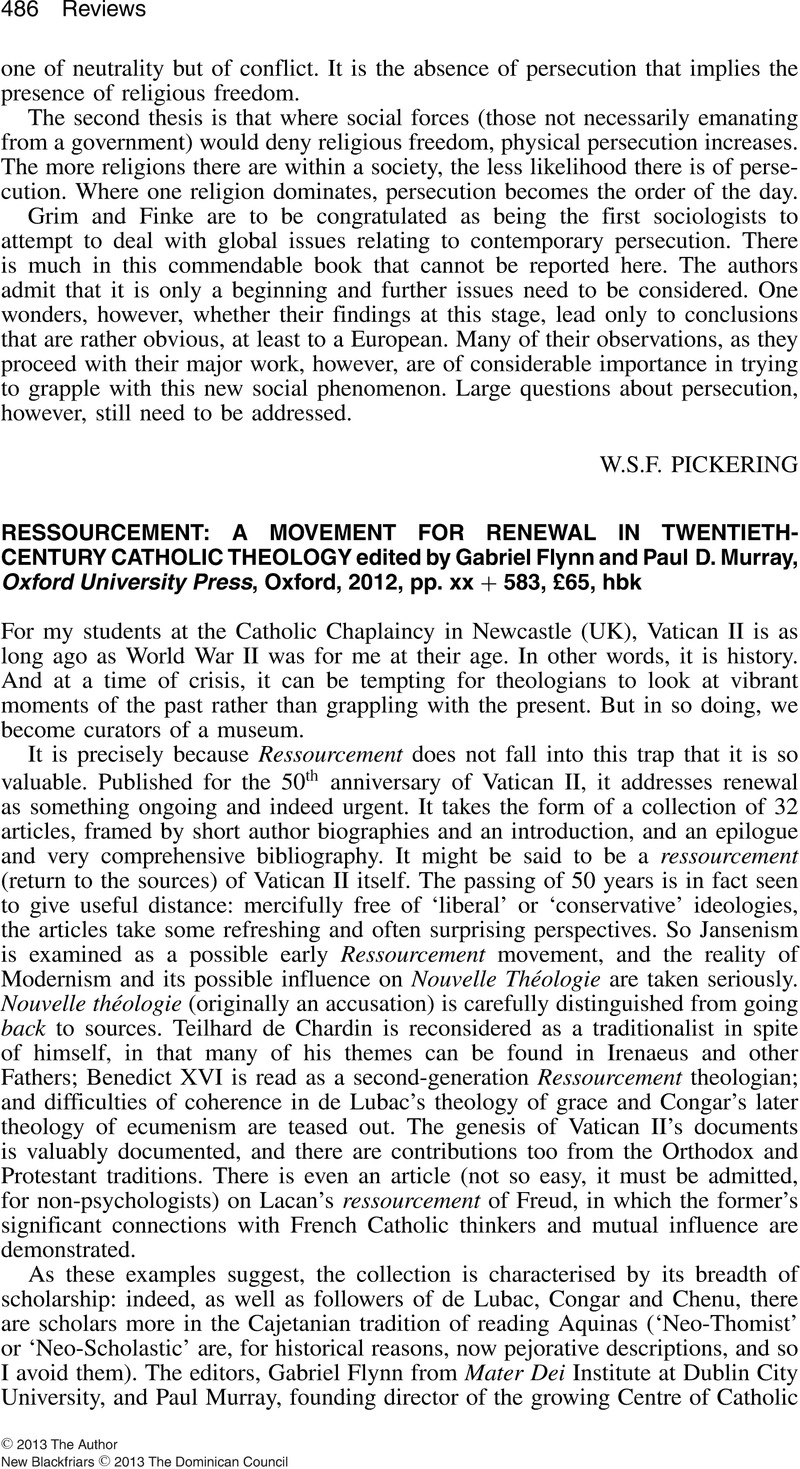No CrossRef data available.
Article contents
Ressourcement: A Movement for Renewal in Twentieth-Century Catholic Theology edited by Gabriel Flynn and Paul D. Murray, Oxford University Press, Oxford, 2012, pp. xx + 583, £65, hbk
Review products
Ressourcement: A Movement for Renewal in Twentieth-Century Catholic Theology edited by Gabriel Flynn and Paul D. Murray, Oxford University Press, Oxford, 2012, pp. xx + 583, £65, hbk
Published online by Cambridge University Press: 01 January 2024
Abstract
An abstract is not available for this content so a preview has been provided. Please use the Get access link above for information on how to access this content.

Information
- Type
- Reviews
- Information
- Copyright
- Copyright © 2013 The Author. New Blackfriars © 2013 The Dominican Council

